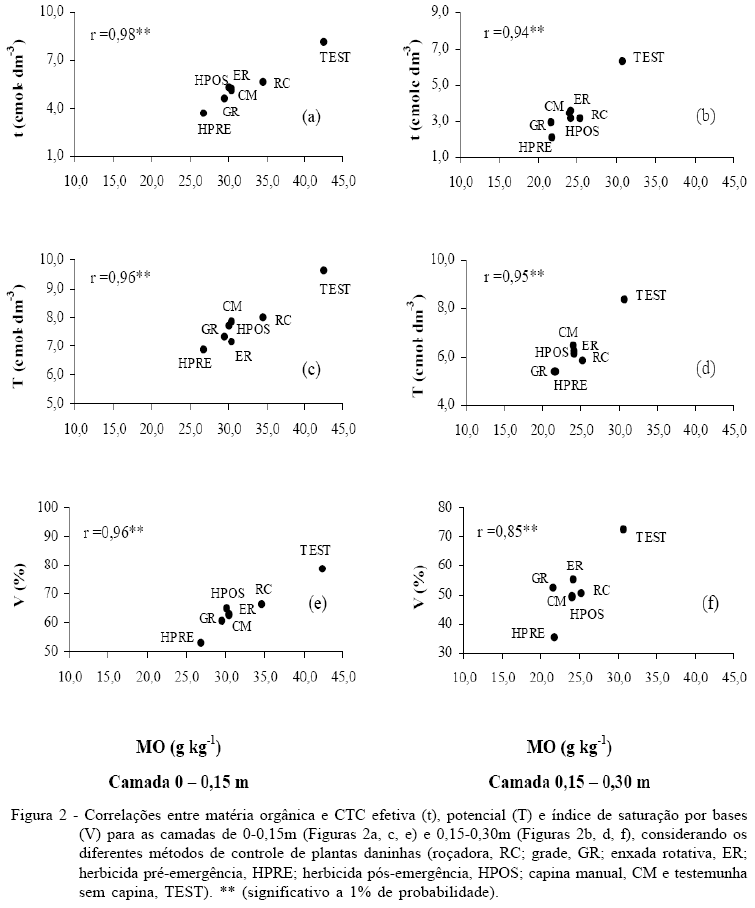In agricultural ecosystems under coffee cultivation, soil management is based on liming, fertilizers and weed control. Alternatives that preserve or increase soil organic matter content are considered when the sustainability is the goal. This study was conducted to evaluate the chemical attributes of a dystroferric Red Latosol (Oxisols) under coffee cultivation submitted to 15 years of weed control methods. Seven interrows coffee plant weed control methods were used; a mower (RC), tanden disk harrow (GR), rotative hoe (ER), pre-emergence herbicide (HPRE), post-emergence herbicide (HPOS), hand hoe (CM) and no interrows control (TEST). The P, K+, Ca2++ Mg2+, sum of bases (SB), base saturation (V), effective (t) and potential (T) cation exchange capacity (CEC) were determined in soil depth from 0-0.15m and 0.15-0.30m. TEST treatment affected positively the P, K+, Ca2+ + Mg2+ content, and effective and potential CEC and V values, while the HR inversely reduced analyzed variable values. Others interrows methods RC, GR, ER, HPOS e CM presented an intermediary conduct among the TEST and HPRE methods on soil fertility.
Coffea arabica L; weed management; soil fertility; sustainability





